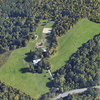Tentative 2022 New Scotland budget up 1%; taxes up 2%
NEW SCOTLAND — At $8.57 million, New Scotland’s tentative budget for next year is up less than 1 percent over this year’s adopted spending plan. The town is again under the state-set levy limit, but residents are expected to see their fifth straight year of incremental tax increases.
For 2022, the town is proposing a tax rate of $1.55 per $1,000 of assessed value for all New Scotland property owners — including those who live in the village of Voorheesville — up from $1.52 per $1,000 of assessed value this year. If adopted, the town-wide tax rate will have increased by about 25.5 percent in the past decade, or about 33 cents per $1,000 since 2012.
New Scotland homeowners often have four or five or more other town-associated taxes to pay on their properties.
There’s the town-wide tax rate; the town-outside-the-village rate, which is set to increase from about 41 cents per $1,000 of assessed value to approximately 42 cents per $1,000; and then there are the taxes associated with the New Scotland’s benefit districts like those for fire, ambulance, emergency medical services, water, light, and sewer.
A home with a taxable value of $300,000 that is located in the New Salem fire and ambulance district receives its emergency medical services from the sheriff’s office, for example, would have five taxes levied against it. In 2021, that property owner would have paid about $920 on a combined tax rate of about $3.07 per $1,000 of assessed value. In 2022, the owner’s rate would increase to about $3.11 per $1,000, which translates to property taxes of about $932.
In addition to their town taxes, New Scotland property owners in 2021 pay an Albany County tax rate of $3.87 per $1,000 of assessed value.
Good news
This time last year, the town estimated draining about $323,000 from the B Fund’s rainy-day account. The B Fund receives nearly all of its revenue from county sale-tax revenue and its appropriations largely cover the highway operations. New Scotland now anticipates adding approximately $73,000 to the reserve before the year is out.
In 2022, the town estimates it will use about $99,000 of B Fund reserve.
For its A Fund reserve, the town’s 2021 budget included a $16,200 drawdown; it now estimates it will instead add $94,000 to the reserve this year.
Supervisor Douglas LaGrange attributed the $400,000 swing on the town’s 2021 reserve fund-balance sheets to better-than-anticipated sales-tax revenue from the county; cost-saving measures implemented by the town board part way through last year; and, due to department retirements, fewer highway workers at various points throughout 2020, in addition to replacements having lower salaries than retirees.
Additionally, all of the town’s water and sewer fund balances are in the black, the first time LaGrange or anyone in his office could remember that being the case, he said during the town board’s budget workshop on Oct. 7.
The town estimates it will use about $108,000 of its $3.8 million in unreserved fund balances in 2022, a third of what it needed this time last year to close New Scotland’s estimated $340,000 budget gap for 2021.
New York’s economy has grown by nearly 9 percent in the first half of this year compared to the same period in 2020, while the county’s sales-tax receipts have swelled since last year’s budget season.
Albany County’s sales-tax revenue is up about 21.7 percent in the first eight months of 2021 compared to January through August of last year, going from about $163.8 million to $199.3 million.
New Scotland estimates it will end 2021 with $2.24 million of sales-tax revenue, a number the town had not anticipated while working on last year’s pandemic-induced tentative budget when it thought it would take in about $1.97 million from the county this year.
For 2022, the town is expecting $2.1 million in revenue from the county.
Home growth and sales
New Scotland expects its largest revenue generator next year to be its total tax levy — a number that includes benefit-district monies — which would yield $3.17 million, of which about $1.61 million comes from the town-wide property tax.
The town-wide property-tax levy in 2022, if adopted, would represent a 41-percent increase in collections in the past decade, compared to the 25.5-percent tax-rate hike property owners experienced over the same period, which is a reflection of the town’s growth over that time.
Between 2010 and 2020, New Scotland’s population increased by about 5.2 percent, the third-highest rate increase among Albany County’s 17 municipalities, according to recently-released Census data. Over the same period, the number of residential properties on the town’s assessment rolls increased from 3,151 to 3,385, nearly all of them single-family homes — over the same period, single-family homes in town went from 2,648 to 2,876.
The town’s share of the mortgage-recording tax also came as a bit of a surprise.
In Albany County, residents pay a recording tax of $1.25 per $100 of mortgage. The local municipality receives 25 cents, as does the county, in addition to the Capital District Transportation Authority, and 50 cents is returned to the state, which in turn sends some of that money back to the county while keeping some to help fund the Mortgage Insurance Agency.
New Scotland received about $216,000 in mortgage taxes for the first six months of this year — it had planned on $235,000 for all of 2021.
For January through June of 2020, the town took in about $139,000 in mortgage taxes. Sales tracked by the New York State Office of Real Property Tax Services show 49 homes in New Scotland and 13 in Voorheesville were sold in the first half of last year. Comparatively, in the final six months of 2020, the ORPTS records show 116 town and village homes were sold.
The town is now estimating $360,000 in mortgage-recording-tax revenue for 2021; it anticipates $265,000 in 2022.
State law allows the town to keep a portion of the mortgage tax generated in Voorheesville. For example, New Scotland was due about $244,500 in June. Albany County, which is charged with collecting and disbursing the mortgage tax, withheld about $28,500 and redistributed it to Voorheesville, which represents about 11.6 percent of the town’s overall haul. The $244,000 in revenue was based on a mortgage count of 262, and was collected for the six-month period between October 2020 and March of this year.
The village, which contains about a quarter of the town’s taxable parcels, is expected to take in $30,000 in mortgage-recording payments this year — but, much like the town, the village is in a better position than initially thought, with expectations of receiving about $41,500 in mortgage taxes this year, according to filings with the state Comptroller’s Office.
Elsewhere in the budget
The town’s overall budget for its contracted refuse-and-garbage services is set to drop by almost 7 percent in 2022.
The decrease is due to a move made in June by the town’s waste-hauler, Robert Wright Disposal, which did away with the annual $55,000 fee New Scotland was charged to recycle residents’ discarded items. The full savings are not seen in the 2022 budget because they are slightly offset by a $15,700 increase in Wright’s contract for pick-up services with the town.
New Scotland is also looking at an increase in the waste-tipping fees it pays at Rapp Road.
“They keep telling us, you know, our tipping fees are going up, our tipping fees are going up,” said the town’s highway superintendent, Ken Guyer, during the Oct. 7 workshop. “They’ve told us the last few years that; they have not.”
But Guyer said that, when he spoke recently to someone from Rapp Road, he was advised to use the “higher number [in] the budget.” The town has set aside almost $46,000 for tipping fees in 2022, up from $38,000 this year, and an $18,000 increase from what the town spent in actual fees in 2020, about $28,000 to almost $46,000.
Projected road improvement outlays are up about 14 percent for next year, from about $384,000 to approximately $439,000, which Guyer attributed to the department basing its budgeting on funding from two of the three state programs New Scotland receives road-improvement dollars from. Typically, the highway department only ever banks on receiving money from the state’s Consolidated Highway Improvement Program, known as CHIPs, and budgets accordingly.
But highway department debt-servicing is set to drop by 42.5 percent in 2022, from about $145,000 to about $101,500, reflected by a $40,000 bond payment that came off the books; the remainder the town had on a $191,600 bond floated in 2016 for a 10-wheel dump truck.
The building inspector’s budget line is expected to jump about 19 percent next year, from about $140,000 to about $167,000. The increase is due to $40,000 added for the town’s new contracted planner position, which is slightly offset by saving about $17,000 by switching from a full-time with benefits code-enforcement officer position to two part-timers.

